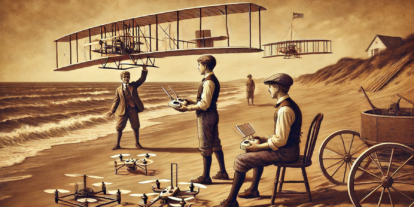Insurance company use of technology has long lagged behind other industries, but not anymore. With the onset of IoT technologies, and especially UAVs or drones, workflows and business processes are changing like never before. PWC estimates that drones save the insurance industry nearly $7 billion a year. More accurately, it’s the data from drones that is driving new efficiencies as legacy systems are replaced. Part 107 certified claims adjusters are the new rockstars of the industry.
Insurance is essentially about assessing, preventing, and mitigating risk with data. Insurers have been using data from telematics in risk mitigation for years in automotive fleet management and have since expanded into automobile and home insurance use. This is a win-win scenario that make customers happy with reduced premiums while limiting the amount of coverage that is necessary. Telematics data is the hidden hero.
The ROI of Drones for Insurance Companies
Drones are emerging in a similar way, but with even more immediate and stronger ROI.
There are many use-cases where drones are already making an impact in core insurance practices including: damage assessment, claims inspection, risk mitigation, underwriting and fraud prevention.
Industry leaders are routinely achieving 3-5X ROI from their drone programs, with claims inspection the vital workflow reaping much of the gains. With drones, images from the field can be evaluated before coverage is determined and turnaround times on claims are reduced drastically.
In the case of catastrophes and disasters, a drone can provide real-time video that captures the extent of damaged areas, long before the location is safe or accessible to vehicles. Insurance companies are also getting into the game of insuring drones and their operators opening whole new lines of business.
The ROI of drones for insurance companies is so large that they’ve been willing to navigate the complex set of software tools often needed to operate. As they add more Part 107 pilots to their operations, the biggest challenge is managing the data, assets and compliance needs that come with teams of 50, 100 and more. The challenge and opportunity of big drone data will increasingly become a focus for more leaders in the space. (Learn more about how Kittyhawk serves insurance companies.)
Safer and Smarter Working Conditions for Adjusters
Companies are moving from dangerous, hands-on, time-intensive property inspections, to a quick, safe, and much faster process that allows workers to stay on the ground. Drones are replacing the ladders and handheld cameras adjusters would typically have to use to inspect damage. This is a welcome change as the Department of Labor reports that property adjusters have nearly 4 times the injury rate of construction workers.
Adjusters typically show up with little-to-no information about the property. Most of the initial details come from an internal form known as the First Notice of Loss (FNOL). Due to the nature of insurance, and their customers quickly filing claims after an event, the information is often vague. If their effort is focused around a leak or exterior damage, the adjuster then works backward to determine whether the problem is related to the roof, a window, or some other cause and then determine the cost of repairs.
Part 107 certified insurance adjusters in the field have an additional workflow to fly their drone in a safe and compliant fashion. They first need to check regulations and airspace to make sure they’re flying legally under safe and compliant conditions. Once they launch the drone, the first step is to get a general lay of the land and/or property to better understand what areas need more attention and documentation. Adjusters can then use the drone to get even more detailed photos or data, like measurements, in areas that garner further interest.
For houses, and even commercial properties, adjusters are doing complete inspections, using a single battery charge with drones in about five to fifteen minutes. A task that otherwise would take an hour or more. Adjusters are improving their time-at-site metrics by leaps and bounds. Three houses a day, is now three houses in an hour.
At every level, insurers are transforming their analog business processes with the entirely new data capabilities that drones enable. Ultimately the beneficiary is every one of us that when damage or disaster strikes, can get the financial help they need faster and easier than ever before.
Learn more
Kevin Teen
Kevin Teen is an Account Executive with Aloft, an enterprise drone operations platform used by the largest UAS operations in the world, helping departments of all sizes better manage UAS operations and enabling the future growth of the industry.



